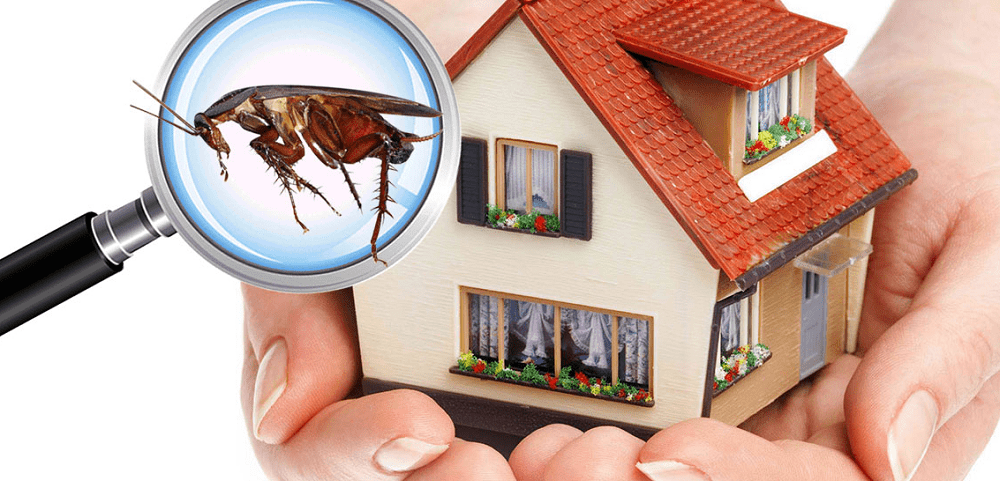Building your dream home is an incredibly exciting milestone. It’s a journey that often takes years of planning, saving, designing, and making countless decisions to turn your vision into a reality. Once construction is nearing completion, you’re probably eager to move in and start enjoying your new space. It’s easy to assume that everything will be perfect, especially if your builder is reputable and experienced. After all, they’re the professionals, right?
But what if I told you that even in a brand-new build, things can go wrong? While your builder may be doing their best to ensure everything is perfect, there’s always a chance that something could slip through the cracks. This is why, no matter how confident you are in your builder’s work, you should always get an independent building and pest inspection before moving into your new home.
You might be asking yourself, “Why would I need an inspection when the house is brand new? Isn’t it up to code? Isn’t it built to last?” Let’s dive into why this is one of the most important steps you can take to protect your investment and ensure that your new home is truly as perfect as you think it is.
Builders Will Do Everything They Can to Avoid an Inspection—But That’s Exactly Why You Need One
When you bring up the idea of an external inspection with your builder, there’s a strong chance you’ll meet resistance. Many builders prefer to avoid having third-party inspectors look at their work. Their reasoning is simple: an inspection could potentially expose flaws or mistakes that they would rather not reveal.
It’s understandable—they don’t want to be penalized for small oversights or missteps. And while many builders do everything in their power to meet the highest standards and avoid mistakes, the pressure of deadlines, tight budgets, and managing multiple projects at once can sometimes lead to corners being cut or small issues being overlooked.
Here’s the thing: while builders generally strive to ensure that everything is done correctly, they are only human. With so many moving parts in a new build, it’s all too easy for a minor issue to go unnoticed, especially in places that are hard to reach, like the foundation, behind walls, or under the floorboards. Small errors can be hard to catch in the final stages, especially when you’re relying on the same team who’s been working on your home for months.
That’s why even if your builder insists there’s no need for an external inspection, you shouldn’t let that deter you. Getting a second set of eyes on the property can help identify problems before they become costly headaches down the track.
New Doesn’t Always Mean Perfect
Many homeowners make the mistake of assuming that a newly built home will be flawless simply because it’s, well, new. But the fact is, new homes aren’t immune to problems. Just because a house is freshly built doesn’t guarantee it meets the highest standards of quality or is completely free of defects. A new home could still suffer from poor workmanship, faulty materials, or even corner-cutting in certain areas, all of which might go unnoticed if not checked by an experienced third party.
While builders do their best to follow Australian standards, the unfortunate reality is that not all work gets done to the level of precision it should be. Some issues are hidden behind walls, in the roof space, or under floors—places that are difficult to check without specialized equipment and knowledge. A builder may not always catch every potential problem, and even if they do, it might not be something they’ll make a priority to fix.
For example, you may think that everything looks perfect, but what if there’s a small crack in the foundation that could worsen over time? Or maybe the plumbing was installed incorrectly, and water pressure in certain parts of the house is subpar. These kinds of problems often go undetected until they become serious, expensive issues—just like how outdated or mismatched design choices can quietly cost you bookings in an Airbnb. Assumptions based on appearance alone can lead to missed problems or lost value.
What Will an External Building and Pest Inspection Catch?
A professional building and pest inspector is trained to find problems that most builders—even the most skilled ones—can miss. Here’s what they’ll look for:
- Structural Defects: While your builder may have ensured the structure is sound, structural defects like cracks in the walls, uneven floors, or foundation issues might not be immediately obvious. An inspector will assess the entire structure for signs of shifting or settling that could pose long-term problems. For example, even minor foundation cracks can indicate shifting soil, which may cause significant damage over time if not addressed.
- Waterproofing and Drainage Issues: One of the most common issues in newly built homes is improper waterproofing. Whether it’s the roof, windows, or basement, poor waterproofing can lead to water leaks that may go unnoticed at first but can lead to mold, wood rot, and other costly problems later. An inspector will check for proper sealing and drainage systems to prevent any future water-related issues.
- Pest Infestations: Just because your home is newly built doesn’t mean it’s immune to pests. In fact, construction sites are often magnets for termites and other pests looking for a new home. Termite infestations are particularly insidious because they can damage the structural integrity of your property before you even realize there’s a problem. A pest inspection will identify any current or potential infestations and help ensure that any preventive measures have been taken.
- Quality of Workmanship: Even if a house is built to code, the quality of the workmanship can vary significantly. For instance, improperly installed windows can lead to air leaks, misaligned doors can create security issues, and poorly done tiling can be both aesthetically displeasing and prone to breakage. A building inspector will assess the quality of the construction to ensure that everything is built to last, not just built to pass code.
- Compliance with Australian Standards: Even if your builder claims to have met Australian standards, the inspector will verify that every aspect of the home adheres to these regulations. This includes everything from structural elements to electrical work, plumbing, and fire safety measures. Compliance with Australian standards isn’t just about passing an inspection—it’s about ensuring the safety and longevity of your home.
Why Isn’t Having Your Own Certifier Enough?
You may be considering hiring your own certifier to ensure everything in your new home meets Australian building standards. While this is an important step in the process, it’s important to understand why it’s not enough to guarantee the quality and safety of your new home. To get a full picture of the construction’s integrity, you need an independent building and pest inspection in addition to the certifier’s approval.
But what’s the difference between a building certifier and a building inspector?
A building certifier is responsible for ensuring that the building meets the legal requirements set by the Australian Building Codes and local regulations. They verify that the design complies with safety, structural, and other technical standards required by law. Essentially, a certifier sets the standards and makes sure that the overall project passes the necessary regulations.
On the other hand, a building inspector ensures that those standards are met throughout the construction process. While the certifier ensures that the design complies with regulations, the inspector focuses on the construction itself, checking for issues such as poor workmanship, faulty materials, structural weaknesses, and hidden defects. The inspector’s role is much more hands-on, providing detailed attention to the execution of the build, and looking for things that the certifier may not catch.
Why isn’t the certifier’s sign-off enough?
Even though the certifier ensures compliance with Australian standards, their inspection is more focused on making sure the minimum legal requirements are met. They do not conduct an in-depth inspection of every detail of the construction or look for potential issues that could arise after you move in, like problems with water damage, hidden pests, or subpar materials that don’t meet the best practice standards.
A building inspector, however, looks at the full scope of the construction and performs a thorough inspection of all areas of the home. They check for hidden defects that could become expensive repairs down the track—things that might not be covered by basic regulatory compliance. They’ll look for structural issues, issues with plumbing, roofing, insulation, and pest-related risks that could potentially damage the property in the long term.
In short, a building certifier ensures that the design complies with legal standards, but a building inspector verifies that the work meets the required standards and identifies issues that could compromise your home’s durability and your peace of mind. These two roles complement each other, but neither can replace the other. A certifier doesn’t do the hands-on inspection work, and a building inspector doesn’t guarantee that everything complies with the law.
So while having a certifier is important, it doesn’t provide the full picture. For your own protection and peace of mind, having an independent inspector look over the finished product will ensure your new home is safe, sound, and free from hidden issues.
The Hidden Costs of Skipping the Inspection
You might be tempted to skip the inspection to save a little money, especially if your builder assures you that everything is fine. However, failing to have a professional inspect your home could cost you far more in the long run.
Minor defects that go unnoticed at first can escalate quickly. Small cracks can widen, plumbing issues can cause water damage, and pest problems can quickly turn into full-blown infestations. What may have been a small issue that could have been repaired for a couple of thousand dollars could soon balloon into a significant expense that requires thousands more to fix. Not to mention the inconvenience and disruption it would cause to your family.
Property-related shortcuts or oversights during construction can often go undetected until they lead to major financial strain. This is similar to what happens when people buy real estate without understanding the legal and financial constraints involved—like the dangers of buying land and house packages or off-the-plan units for your SMSF. In both cases, early decisions without proper due diligence can result in years of regret.
The cost of a building and pest inspection is a small price to pay when you consider the potential for costly repairs down the road. Even if the inspection doesn’t find any issues, you’ll have the peace of mind knowing that your home is as it should be.
The Bottom Line
At the end of the day, the only way to be absolutely certain that your new home is free from hidden problems is to hire an independent building and pest inspector. While your builder may be doing their best, they’re only human, and their job is to keep costs down and projects moving. An external inspection is an investment in your future, ensuring that your home is safe, structurally sound, and free of pests.
So, before you take the keys to your new home and settle in, make sure you’ve covered all the bases with a thorough inspection. It’s a step you’ll be grateful for in the long run.




